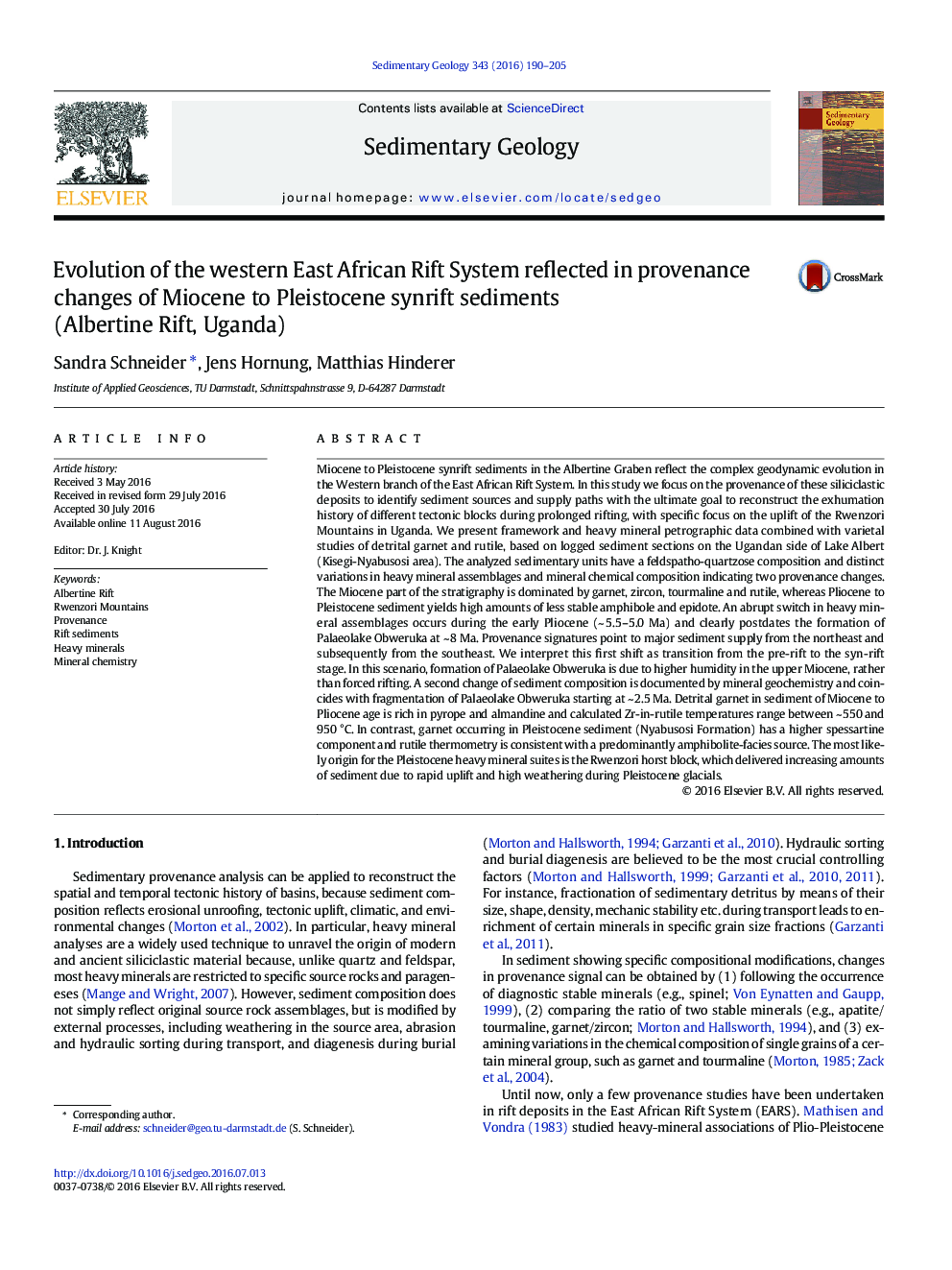| کد مقاله | کد نشریه | سال انتشار | مقاله انگلیسی | نسخه تمام متن |
|---|---|---|---|---|
| 4688923 | 1636020 | 2016 | 16 صفحه PDF | دانلود رایگان |

• The provenance of Miocene to Pleistocene synrift sediments in the Albertine Rift (Uganda) is reconstructed.
• Three major phases of changing sediment supply are interpreted closely related to rifting activity in the Albertine graben.
• The major supply system is shifting from NE in the Miocene to S in the Pleistocene.
• The new provenance data allow to modify and refine existing evolutionary models for the western branch of the EARS.
Miocene to Pleistocene synrift sediments in the Albertine Graben reflect the complex geodynamic evolution in the Western branch of the East African Rift System. In this study we focus on the provenance of these siliciclastic deposits to identify sediment sources and supply paths with the ultimate goal to reconstruct the exhumation history of different tectonic blocks during prolonged rifting, with specific focus on the uplift of the Rwenzori Mountains in Uganda. We present framework and heavy mineral petrographic data combined with varietal studies of detrital garnet and rutile, based on logged sediment sections on the Ugandan side of Lake Albert (Kisegi-Nyabusosi area). The analyzed sedimentary units have a feldspatho-quartzose composition and distinct variations in heavy mineral assemblages and mineral chemical composition indicating two provenance changes. The Miocene part of the stratigraphy is dominated by garnet, zircon, tourmaline and rutile, whereas Pliocene to Pleistocene sediment yields high amounts of less stable amphibole and epidote. An abrupt switch in heavy mineral assemblages occurs during the early Pliocene (~ 5.5–5.0 Ma) and clearly postdates the formation of Palaeolake Obweruka at ~ 8 Ma. Provenance signatures point to major sediment supply from the northeast and subsequently from the southeast. We interpret this first shift as transition from the pre-rift to the syn-rift stage. In this scenario, formation of Palaeolake Obweruka is due to higher humidity in the upper Miocene, rather than forced rifting. A second change of sediment composition is documented by mineral geochemistry and coincides with fragmentation of Palaeolake Obweruka starting at ~ 2.5 Ma. Detrital garnet in sediment of Miocene to Pliocene age is rich in pyrope and almandine and calculated Zr-in-rutile temperatures range between ~ 550 and 950 °C. In contrast, garnet occurring in Pleistocene sediment (Nyabusosi Formation) has a higher spessartine component and rutile thermometry is consistent with a predominantly amphibolite-facies source. The most likely origin for the Pleistocene heavy mineral suites is the Rwenzori horst block, which delivered increasing amounts of sediment due to rapid uplift and high weathering during Pleistocene glacials.
Journal: Sedimentary Geology - Volume 343, 15 August 2016, Pages 190–205